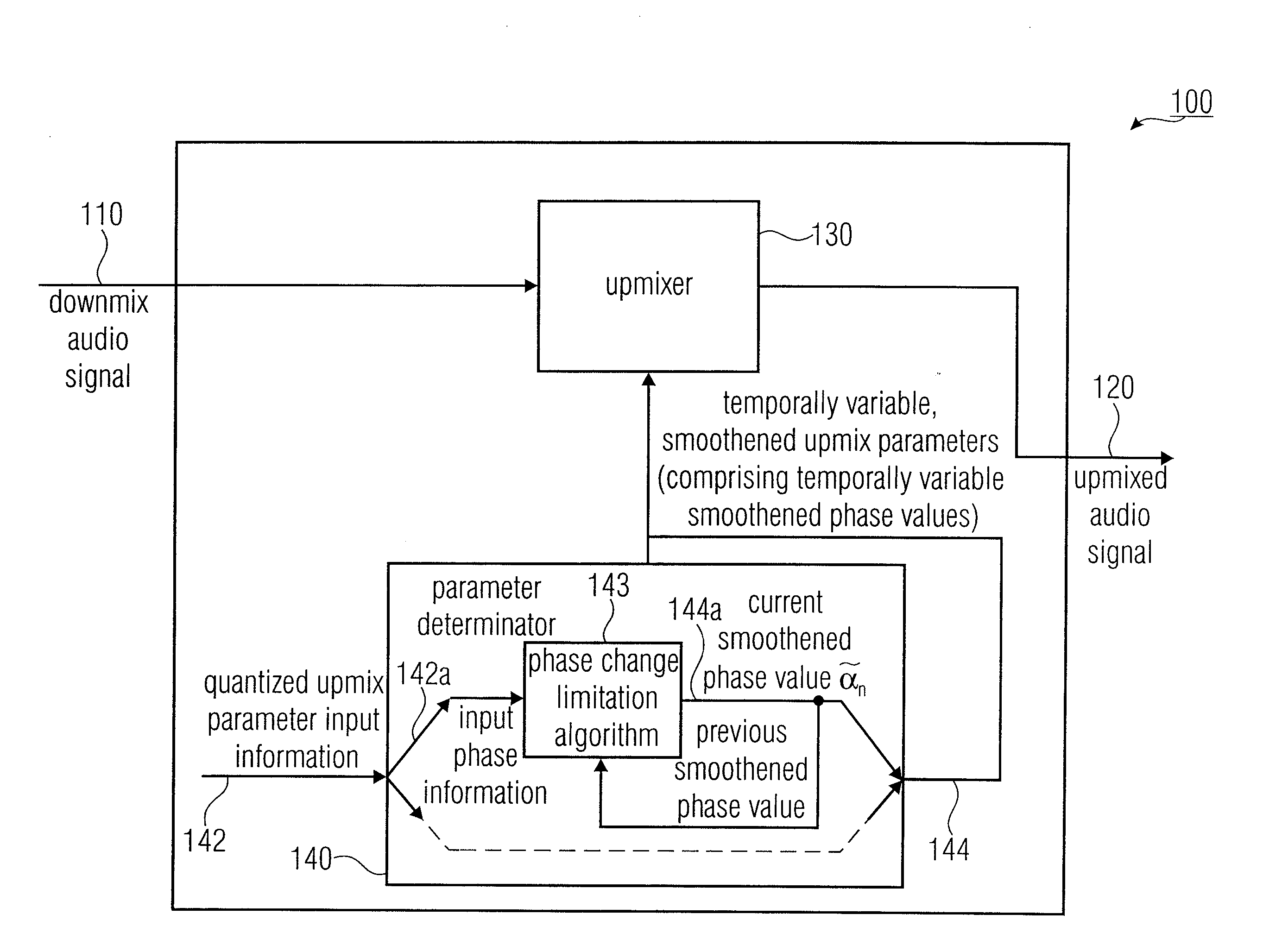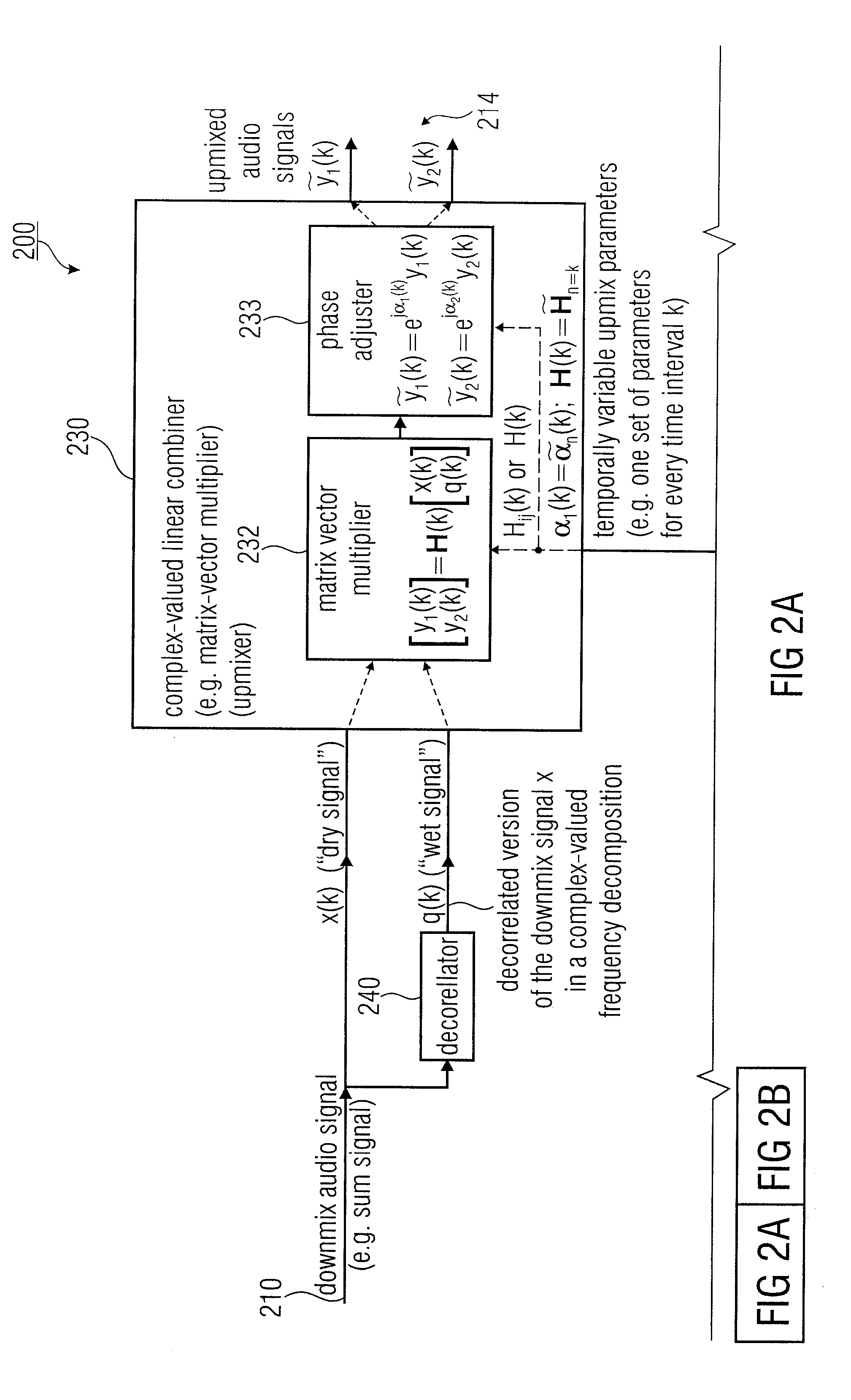Apparatus, method and computer program for upmixing a downmix audio signal using a phase value smoothing
audio signal technology, applied in the field of apparatus, a computer program and a phase value smoothing technology, can solve the problems of degraded audio quality of binaural cue coding decoders, poor audio quality, etc., and achieve the effect of improving the hearing impression, small settling time, and sufficiently good smoothing characteristics
- Summary
- Abstract
- Description
- Claims
- Application Information
AI Technical Summary
Benefits of technology
Problems solved by technology
Method used
Image
Examples
Embodiment Construction
1. EMBODIMENT ACCORDING TO FIG. 1
[0045]FIG. 1 shows a block schematic diagram of an apparatus 100 for upmixing a downmix audio signal, according to an embodiment of the invention. The apparatus 100 is configured to receive a downmix audio signal 110 describing one or more downmix audio channels and to provide an upmixed audio signal 120 describing a plurality of upmixed audio channels. The apparatus 100 comprises an upmixer 130 configured to apply temporally variable upmix parameters to upmix the downmix audio signal 110 in order to obtain the upmixed audio signal 120. The apparatus 100 also comprises a parameter determinator 140 configured to receive quantized upmix parameter input information 142. The parameter determinator 140 is configured to obtain one or more temporally smoothened upmix parameters 144 for usage by the upmixer 130 on the basis of the quantized upmix parameter input information 142.
[0046]The parameter determinator 140 is configured to combine a scaled version of...
PUM
 Login to View More
Login to View More Abstract
Description
Claims
Application Information
 Login to View More
Login to View More - R&D
- Intellectual Property
- Life Sciences
- Materials
- Tech Scout
- Unparalleled Data Quality
- Higher Quality Content
- 60% Fewer Hallucinations
Browse by: Latest US Patents, China's latest patents, Technical Efficacy Thesaurus, Application Domain, Technology Topic, Popular Technical Reports.
© 2025 PatSnap. All rights reserved.Legal|Privacy policy|Modern Slavery Act Transparency Statement|Sitemap|About US| Contact US: help@patsnap.com



